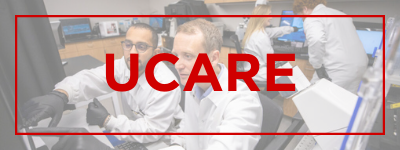UCARE: Undergraduate Creative Activities and Research Experiences

UCARE: Research Products
Date of this Version
4-2016
Document Type
Poster
Citation
UCARE Poster session, University of Nebraska-Lincoln Research Fair, April 2016, Lincoln, NE.
Abstract
Can we reduce methane by using dietary interventions to reduce carbon footprint and increase feed efficiency? Ruminant livestock account for a significant amount of the anthropogenic methane produced in the U.S. All ruminant livestock produce 28% of the earth’s methane emissions. The methane within ruminants is produced by a microbial fermentation, especially by a group of bacteria known as the methanogens. However, the different species of methanogens and their pathways of methane production within ruminants are not fully understood. Cattle are considered one of the main producers of methane. They produce 20% of the U.S. methane emissions. Methane absorbs more heat than carbon dioxide. By reducing methane emissions, we are creating a more sustainable agriculture. Over the past few decades, the dairy industry has been able to increase feed efficiency while decreasing methane emissions. This project will evaluate the interaction between methane, dietary feed, and feed efficiency to reduce methane in cattle.
This project will evaluate the microbial community shifts affected by different diets and how this correlates with changes in the microbial community and levels of methane released. To identify the microbial community structure, we will isolate microbial DNA from rumen contents and will amplify the 16S ribosomal gene using the polymerase chain reaction (PCR). The PCR products will be sequenced to identify microbial community structure and changes from dietary conditions. Volatile fatty acids will also be analyzed to help understand feed efficiency.
The proposed study will help understand how dietary intervention can be used to change microbial community structure. In turn, this can reduce methane emission in cattle. By understanding the host-microbe relationship in this project, effective management decisions can be made to improve cattle production by manipulating the microbial ecosystem to increase animal feed efficiency and reduce methane emission.


Comments
Copyright © 2016 Makala Muller, Nirosh D. Aluthge, Allison L. Knoell, Morgan Kaiser and Samodha C. Fernando